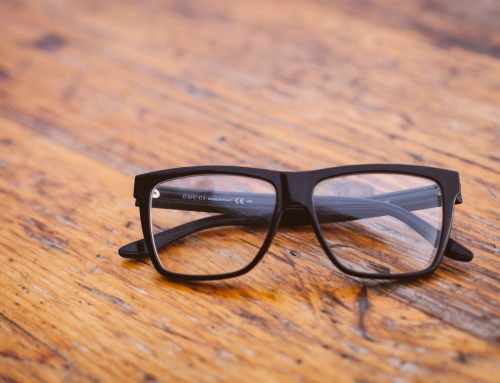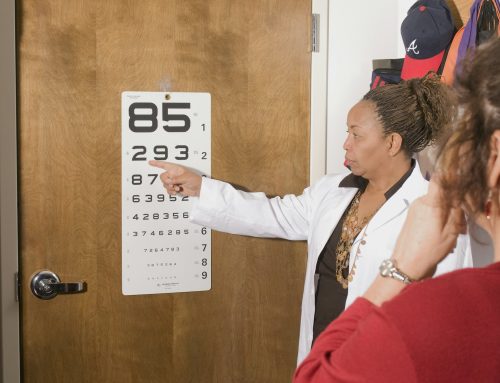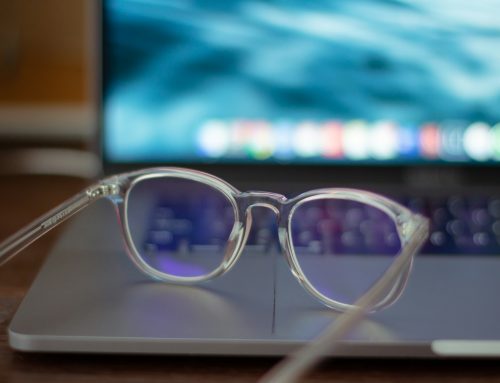In today’s digital age, screens have become integral to our daily lives. From computers and smartphones to televisions and tablets, screens have the power to connect, entertain, and inform us. However, increased screen time can also lead to negative effects, including strain on our eyes and potential long-term vision problems.
Optiko, a leading optical care provider in Calgary, understands the importance of caring for your eyes amidst our screen-filled world. That’s why we wanted to create a helpful and informative guide to help you manage and reduce screen time for better eye health.
The issue is commonly known as “computer vision syndrome” or “digital eye strain.” Research has shown that individuals who spend two or more consecutive hours using digital devices are more likely to experience eye strain and discomfort. This can include blurry vision, dry eyes, headaches, and even neck and shoulder pain. As the pandemic has shifted work environments, reliance on digital devices has heightened, making proper eye care more crucial than ever.
This blog post will discuss strategies to manage screen time and the accompanying risks to your eye health. We will dive into topics such as the 20-20-20 rule, proper ergonomics for your workstation, adjusting screen settings for better visual comfort, and when to invest in specialized eye care products, like blue light filtering lenses or professional eye examinations. By implementing these practices, you’ll not only improve your eye health but also your overall comfort and wellbeing in the long run.
The 20-20-20 Rule and Its Benefits
A simple yet effective strategy to help combat digital eye strain is the widely recommended 20-20-20 rule. This rule suggests that for every 20 minutes spent using a screen, you should take a 20-second break and focus your eyes on something 20 feet or approximately six meters away. This brief break allows your eyes to relax and reduce the chances of developing eye strain.
Incorporating the 20-20-20 rule into your daily routine can provide numerous benefits. It mitigates the risk of eye strain and other discomforts associated with prolonged screen time and encourages more regular eye movements and blink frequency. Blinking helps maintain the eye’s moisture level, preventing dryness and the accompanying irritation. By consistently applying the 20-20-20 rule, you can significantly improve your eye health while still maintaining productivity while working on your digital devices.
Ergonomics for Your Workspace
Proper ergonomics play a crucial role in your eye health, as well as preventing muscle discomfort. The proper setup of your workspace can reduce the risk of eye strain, neck pain, and shoulder strain—all common ailments associated with long hours spent in front of a screen. Here are a few tips to optimize your workspace:
- Correct monitor placement: Place your computer monitor directly in front of you, approximately an arm’s length away. The top of the screen should be at or slightly below eye level, allowing you to maintain a neutral head position.
- Appropriate lighting: Adequate lighting is essential to reducing eye strain. Position your workspace to minimize screen glare from windows or overhead lights, and consider using a desk lamp to ensure your work area is well-lit.
- Adopt good posture: Maintain a proper seated position where your feet rest flat on the floor, your back is supported, and your screen is at an appropriate viewing distance. This will not only help reduce eye strain but also prevent muscle discomfort and enhance overall wellbeing.
- Take stretch breaks: Regularly stand up and stretch your legs, arms, and neck. These breaks encourage better blood circulation and relaxation, preventing both eye strain and physical discomfort.
By investing time in creating a well-designed workspace, you will set yourself up for optimal eye health and overall comfort during long hours at the computer.
Screen Setting Tweaks for Better Vision
Now that your workspace is set up ergonomically, optimizing the settings on your digital devices can further improve the comfort and long-term health of your eyes. Here are a few adjustments to consider:
- Adjust screen brightness: Ensure your screen brightness is appropriate for your work environment. Aim for a brightness level that closely matches your surroundings, minimizing strain on your eyes while preserving image clarity.
- Text size and contrast: Increasing the text size on your digital devices and adjusting the contrast can significantly improve text readability, ultimately reducing eye strain.
- Opt for a blue light filter: Many digital devices now offer built-in blue light filtering options to reduce the amount of blue light emitted. Blue light has been linked with disrupted sleep patterns and increased eye strain, so utilizing a blue light filter can greatly benefit your overall eye health.
Take time to explore and customize your device settings to maximize visual comfort and improve your eye health in the long term.
Embracing Eye Care Products and Professional Support
In addition to these practices, certain eye care products and services can help maintain your eye health.
- Blue light-blocking lenses: If you spend significant time on your digital devices, consider investing in blue light-blocking lenses for your prescription glasses. Blue light filtering lenses help protect your eyes from the potentially harmful effects of blue light emitted by screens.
- Artificial tears: Dry eyes are a common symptom of excessive screen time. Over-the-counter artificial tears can help alleviate dryness and provide the added moisture your eyes may need.
- Regular eye exams: Make eye exams a priority and maintain a relationship with your optometrist. Regular eye exams can help identify and address any vision issues or concerns early on, ensuring optimal eye health and a chance to discuss any ongoing issues with screen time.
Maintaining a proactive approach to eye care alongside managing screen time can make a significant difference in keeping your eyes healthy and comfortable.
Conclusion
As digital devices become even more prevalent daily, understanding the importance of protecting our eyes from the potential risks associated with excessive screen time is vital. By implementing strategies such as the 20-20-20 rule, optimizing workspace ergonomics, adjusting device settings, and investing in eye care products or professional support, you can take control of your eye health and minimize the risks associated with prolonged screen use.
Remember, Optiko is here to support you on this journey – from providing expert advice through our informative blog to offering you a range of eye care services and products. Keep your eyes healthy and comfortable in this digital age with the help of Optiko, your trusted optical care provider and ophthalmologist in Calgary, to schedule your next appointment.








